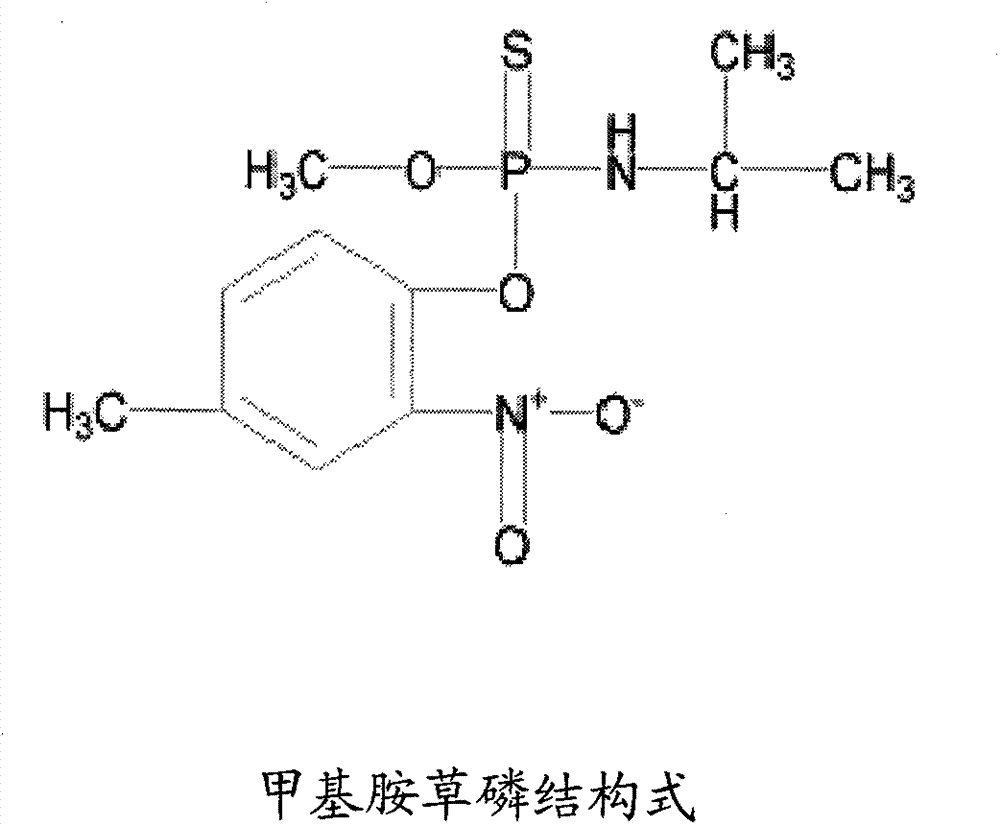Breeding method for introducing corn parthenogernesis by using amiprofos-methyl
A methamidophos, parthenogenesis technology, applied in the directions of botanical equipment and methods, applications, plant genetic improvement, etc., can solve the problems of high cost, difficult operation, low doubling rate, etc., and achieves high repeatability and operation. Easy, procedurally simple effects
- Summary
- Abstract
- Description
- Claims
- Application Information
AI Technical Summary
Problems solved by technology
Method used
Image
Examples
Embodiment 1
[0025] (1) Inducer preparation and treatment material selection
[0026] The marketed amisophos-methyl was selected and diluted with water to a concentration of 40 μmol / L inducer.
[0027] The object of treatment is the maize hybrid "Liaodan 565".
[0028] (2) Induction treatment
[0029] Ears are strictly bagged before silking. After most of the filaments on the fruit ear are spit out, cut the filaments short, and keep the length of the filaments at about 2.5 cm, then spray the filaments with a small sprayer, and put them back into the paper bag. Repeat the spraying twice a day at 6:00 and 8:00, respectively, for 2 consecutive days. 30 spikes were processed.
[0030] (3) harvest
[0031] The ears are harvested at maturity, the bracts are carefully peeled off, and the seeds are removed.
[0032] (4) Identification and reproduction
[0033] In the next season, the seeds will be sown as a single seed, and the individual plants that do not meet the breeding goals will be e...
Embodiment 2
[0035] (1) Inducer preparation and treatment material selection
[0036] The marketed amisophos-methyl was selected and diluted with water to a concentration of 60 μmol / L inducer.
[0037] The object of treatment is the maize hybrid "Zhengdan 958".
[0038] (2) Induction treatment
[0039] Ears are strictly bagged before silking. After most of the filaments on the ear are spit out, cut the filaments short, and keep the length of the filaments at about 2.0 cm, then use a small sprayer to spray the filaments, and finally put them back into the paper bag. The spraying was repeated 3 times a day at 6:00, 8:00 and 17:00, respectively, for 2 consecutive days. 40 spikes were processed.
[0040] (3) harvest
[0041] Harvest fruit ears after maturity, carefully peel off the bracts, take off the seeds, and obtain 180 seeds.
[0042] (4) Identification and reproduction
[0043] In the next season, the seeds were sown as a single seed, and a single plant with an excellent phenotype...
Embodiment 3
[0046] (1) Inducer preparation and treatment material selection
[0047] Select the amisophos-methyl sold on the market, and dilute it with water to contain the inducer with a concentration of 80 μmol.
[0048] The processing object is "Jundan 20".
[0049] (2) Induction treatment
[0050] Planted under the condition of 1000 meters of space isolation, strictly emasculated before powder loosening. When most of the filaments on the ear are spit out and the length of the filaments is about 2.0 cm, use a sprayer to spray the filaments. Repeat the spraying 3 times at 6:00, 8:00 and 16:00 for 2 consecutive days. 50 spikes were processed.
[0051] (3) harvest
[0052] Harvest fruit ears after maturity, carefully peel off the bracts, remove the seeds, and harvest 200 seeds.
[0053] (4) Identification and reproduction
[0054] In the next season, the seeds will be sown as a single seed, and 150 excellent single plants will be selected according to the phenotype, and 100 ears wi...
PUM
 Login to View More
Login to View More Abstract
Description
Claims
Application Information
 Login to View More
Login to View More - R&D
- Intellectual Property
- Life Sciences
- Materials
- Tech Scout
- Unparalleled Data Quality
- Higher Quality Content
- 60% Fewer Hallucinations
Browse by: Latest US Patents, China's latest patents, Technical Efficacy Thesaurus, Application Domain, Technology Topic, Popular Technical Reports.
© 2025 PatSnap. All rights reserved.Legal|Privacy policy|Modern Slavery Act Transparency Statement|Sitemap|About US| Contact US: help@patsnap.com

